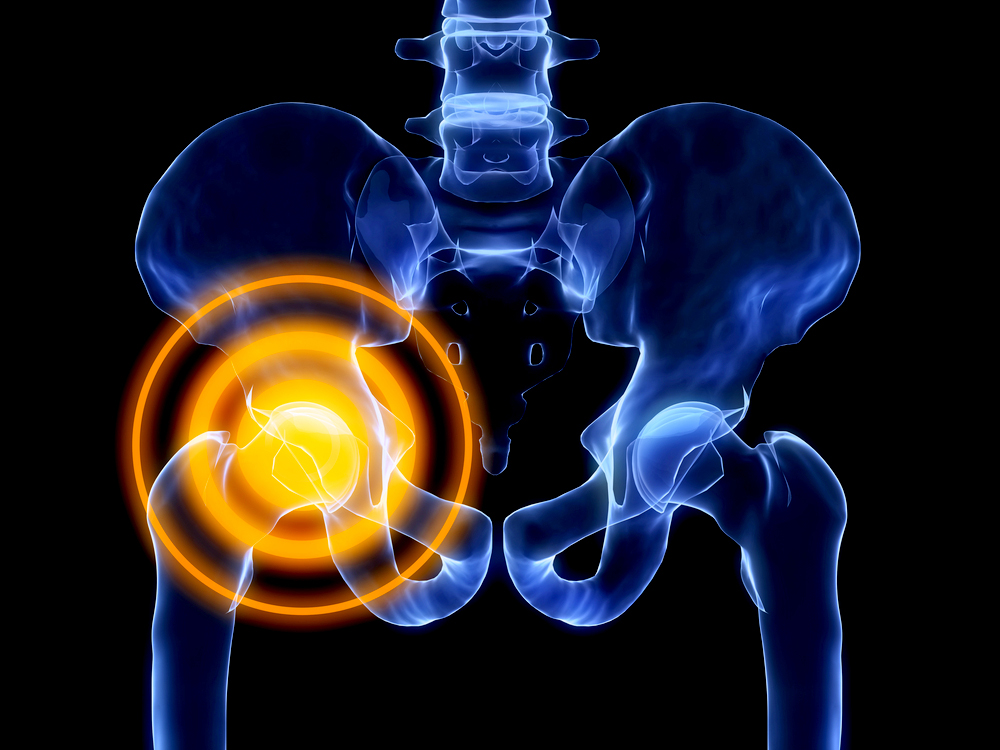What is ischiofemoral hip impingement (IFI)?
There are bony prominences along the bottom of the pelvis, known as the ischial tuberosities or “sitting bones”, that serves as the attachment site for the hamstring muscles. The lesser trochanter, a bony prominence on the inner thigh bone, sits adjacent to these “sitting bones”. The space between these bony processes can narrow resulting in entrapment and compression of the quadratus femoris muscle and the sciatic nerve causing a painful hip condition known as ischiofemoral impingement. Dr. Ronak Mukesh Patel, orthopedic hip specialist serving patients in Sugar Land, Pearland, and the Houston, Texas area, has the knowledge and understanding as well as substantial experience in treating patients who have experienced ischiofemoral impingement.

What causes ischiofemoral hip impingement?
There are a number of factors that can lead to the development of ischiofemoral impingement (IFI). Some current studies have found that weakness in the hip muscles may create an imbalanced pelvis and ultimately lead to IFI. Deterioration of the articular cartilage surrounding the head of the femur (thigh bone) and socket of the acetabulum (pelvis) from osteoarthritis or other degenerative joint conditions can narrow the ischiofemoral space. A fracture near the femoral head, developmental hip dysplasia, and previous hip surgery can also affect the spacing between these bony prominences.
What are the symptoms of IFI or ischiofemoral hip impingement?
Ischiofemoral impingement (IFI) is a newly recognized hip condition with symptoms that overlap several other hip conditions. The most common complaint of IFI is a pain in the buttocks or groin area that can worsen with bending forward or hamstring stretching. Other common symptoms of IFI can include:
- Discomfort with running, walking, or sitting
- A “snapping” sensation in the hip
- Limping or abnormal gait
- Sciatic nerve pain that radiates down one leg
How is ischiofemoral impingement diagnosed?
A complete medical history is obtained by Dr. Patel followed by a thorough physical examination. During the exam, Dr. Patel will perform an impingement test with the patient lying on the non-affected side. A positive impingement test occurs if the pain improves with extending the leg away from the table and worsens with bringing it closer to the table. Diagnostic imaging tools, such as an ultrasound or magnetic resonance imaging (MRI), can confirm narrowing of the ischiofemoral space.
What is the treatment for ischiofemoral hip impingement?
Because ischiofemoral impingement (IFI) is a newly recognized hip condition, it often is misdiagnosed. Therefore, if ischiofemoral impingement is suspected, a consult with an orthopedic hip specialist that has substantial knowledge of this hip condition is highly recommended.
Non-surgical treatment:
Patients with confirmed ischiofemoral impingement (IFI) often respond well to non-surgical therapies alone. Activity modification and the addition of orthotic insoles can be helpful in alleviating symptoms. The pain and inflammation associated with IFI can be managed with a combination of rest, non-steroidal anti-inflammatory medications (NSAIDs), and ultrasound-guided injections. Participation in a physical rehabilitation program, when appropriate, is essential for treating this condition.
Surgical treatment:
Some patients, however, may not respond well to non-surgical treatment measures. For these individuals, Dr. Patel will recommend surgical intervention to properly treat ischiofemoral impingement. Any other conditions that can irritate the ischiofemoral space, such as muscle tears, labral tears, or femoroacetabular impingement (FAI), can also be addressed at this time. Dr. Patel may implement one or more of the following surgical techniques:
- Lesser Trochanter Resection: The bony prominence on the inner thigh bone is partially removed in this procedure. The majority of the iliopsoas tendon attachment is preserved while also widening the ischiofemoral space. This procedure can be performed endoscopically or as an open surgery.
- Ischial Tuberosity Decompression: This minimally invasive endoscopic procedure removes any bony irregularities, such as bone spurs, from the ischial tuberosity to increase the amount of space available for muscle and nerve movement.
- Femoral Osteotomy: In this procedure, a section of bone is removed from the proximal femur. The remaining space can be closed with a bone graft or implementing metal plates and screws to rejoin the bone ends.
Hip Impingement Specialist

Do you experience hip pain when running, walking or sitting for prolonged periods of time? If so, you may have a condition called ischiofemoral impingement, (IFI) or hip impingement. Ischiofemoral impingement can cause pain in the buttocks or groin that radiates down one leg and becomes worse with activity. Hip IFI specialist, Doctor Ronak Mukesh Patel, provides diagnosis as well as surgical and nonsurgical treatment options for patients in Houston, Sugar Land, and Pearland, TX who are experiencing hip pain caused by ischiofemoral impingement. Contact Dr. Patel’s team today!


